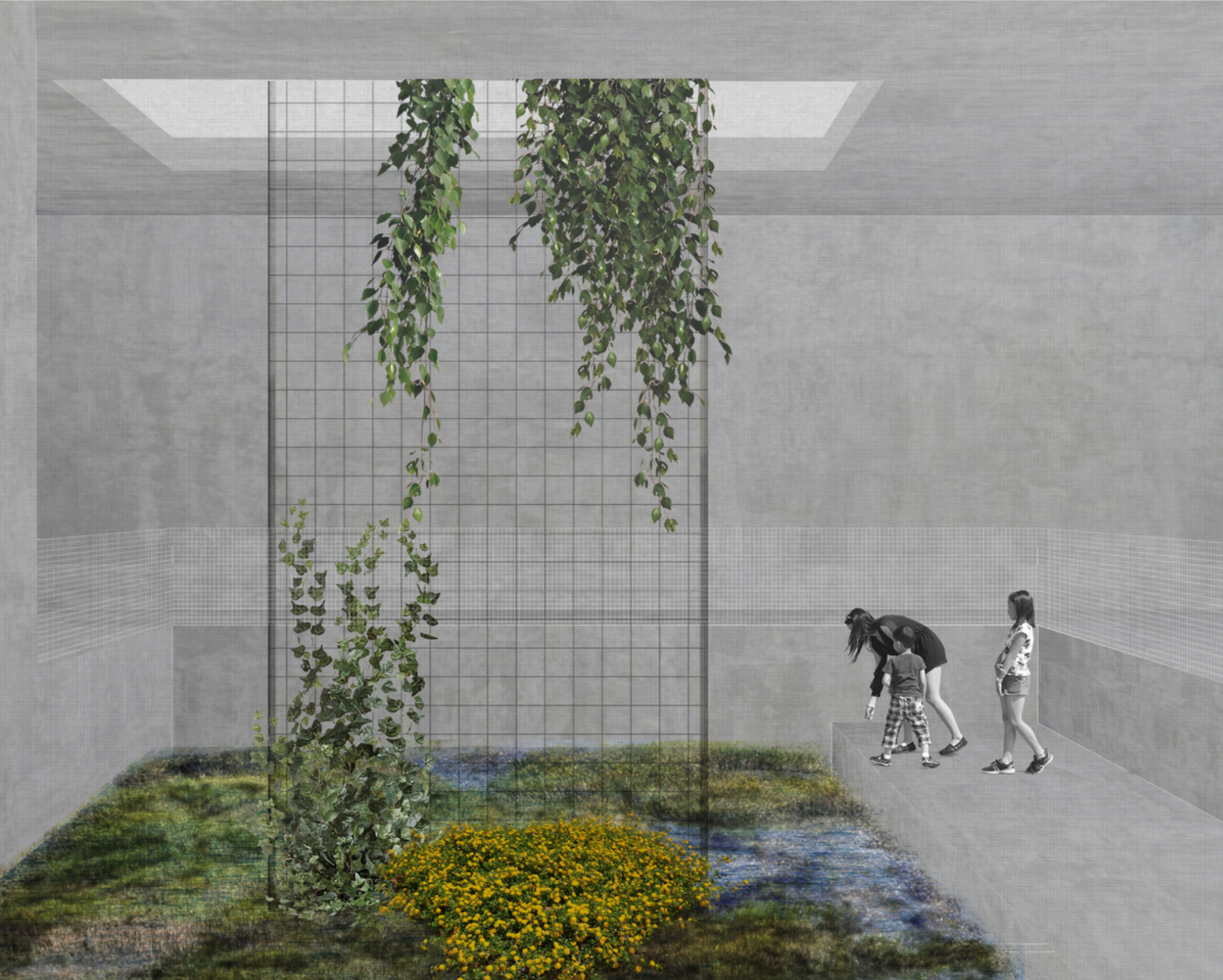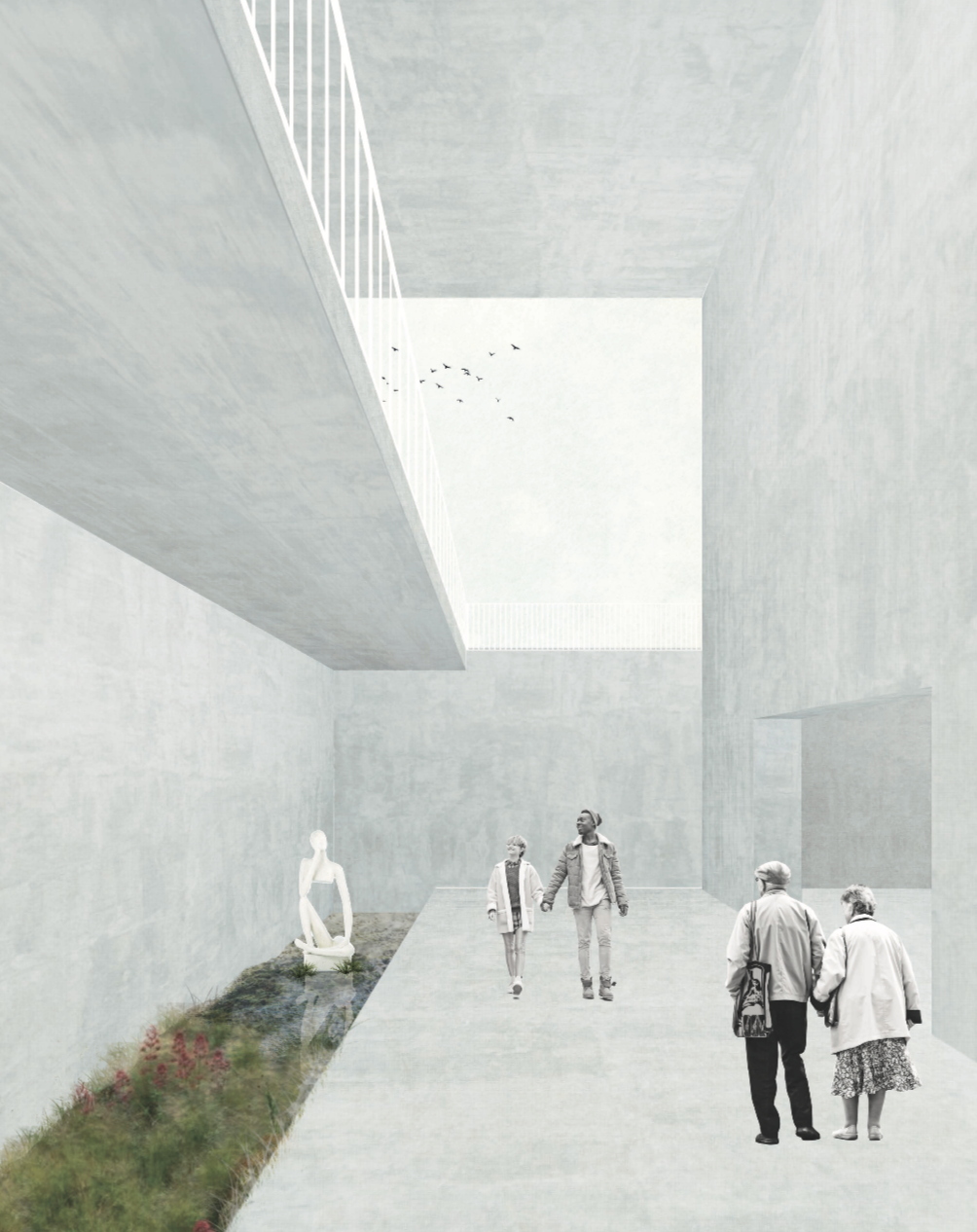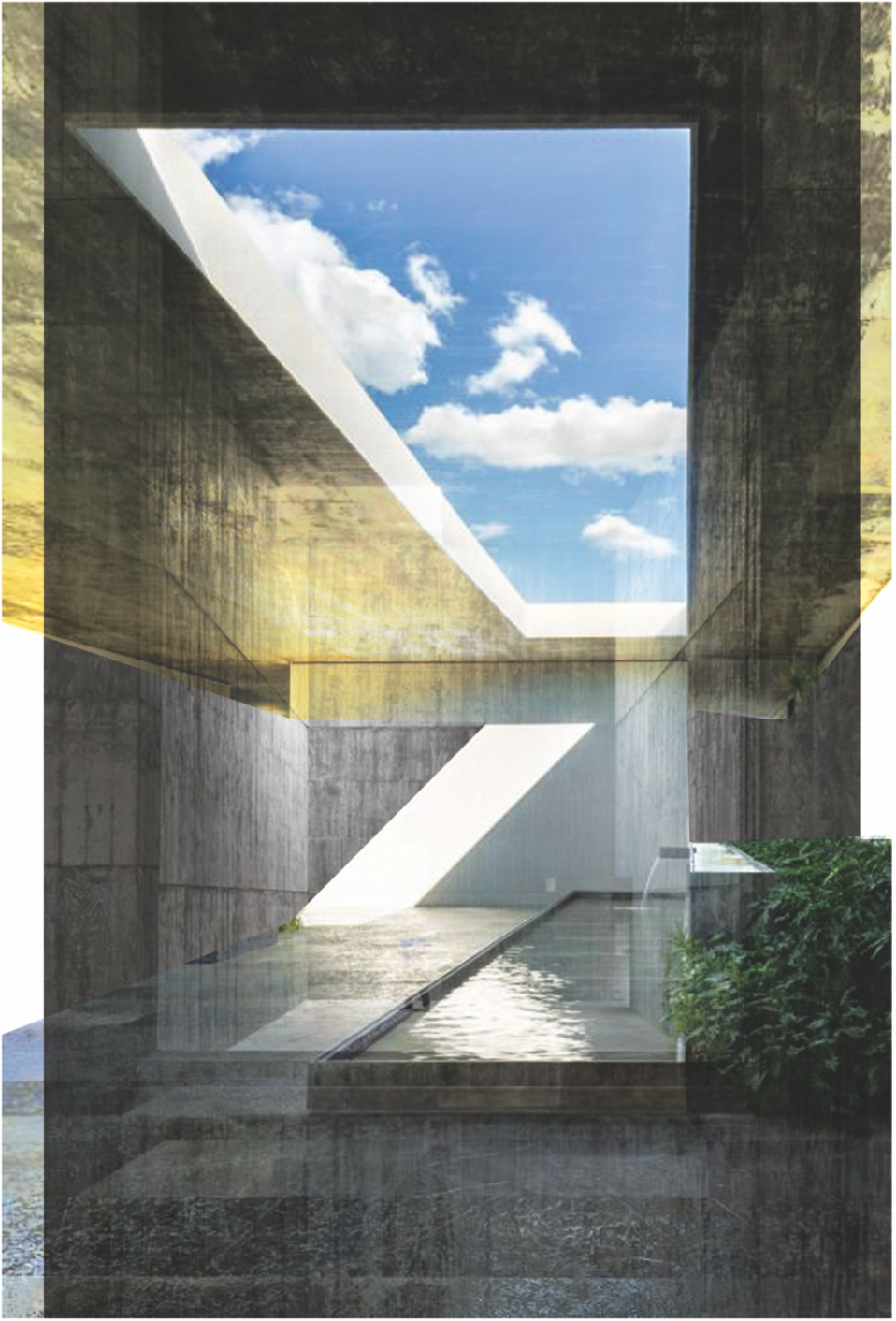experimental station
a resilient regeneration of manhattan's coastline
Situated along the coast in Manhattan’s Lower East Side neighborhood, the project site faces both social and environmental challenges. To this day, many buildings throughout the Lower East Side are still facing the damaging repercussions brought by Hurricane Sandy. This proposal envisions the site as a catalyst for the formation of new coastal infrastructure along the Manhattan coastline.
The project brief asks to redevelop the Shuang Wen Public School through the public-private partnership program. This proposal seeks to use the PPP as a way to not only give the community a new school, but to also create a resilient public space that serves as a gathering place and protects local residents from future flooding.
A system of zones blends the urban grid with the river’s edge. The gradual softening of the grid merges the city’s density with a natural ecosystem, buffering the site from rising sea levels and future storm damage. The building program is broken down and separated between five structures that allow people and water to flow in and around the site. The public program resides on the first three levels of each building. This serves not only to activate the ground plane but buffers the housing units on the upper levels from potential flooding. The lower public levels are designed in a way to welcome any potential flooding and provide adaptability in this increasingly uncertain era.
location: lower east side, manhattan | type: collaborative academic project | institute: University of Virginia | advisor: Matthew Jull | team: Kate Lipkowitz and Kristina Fisher | year: 2018
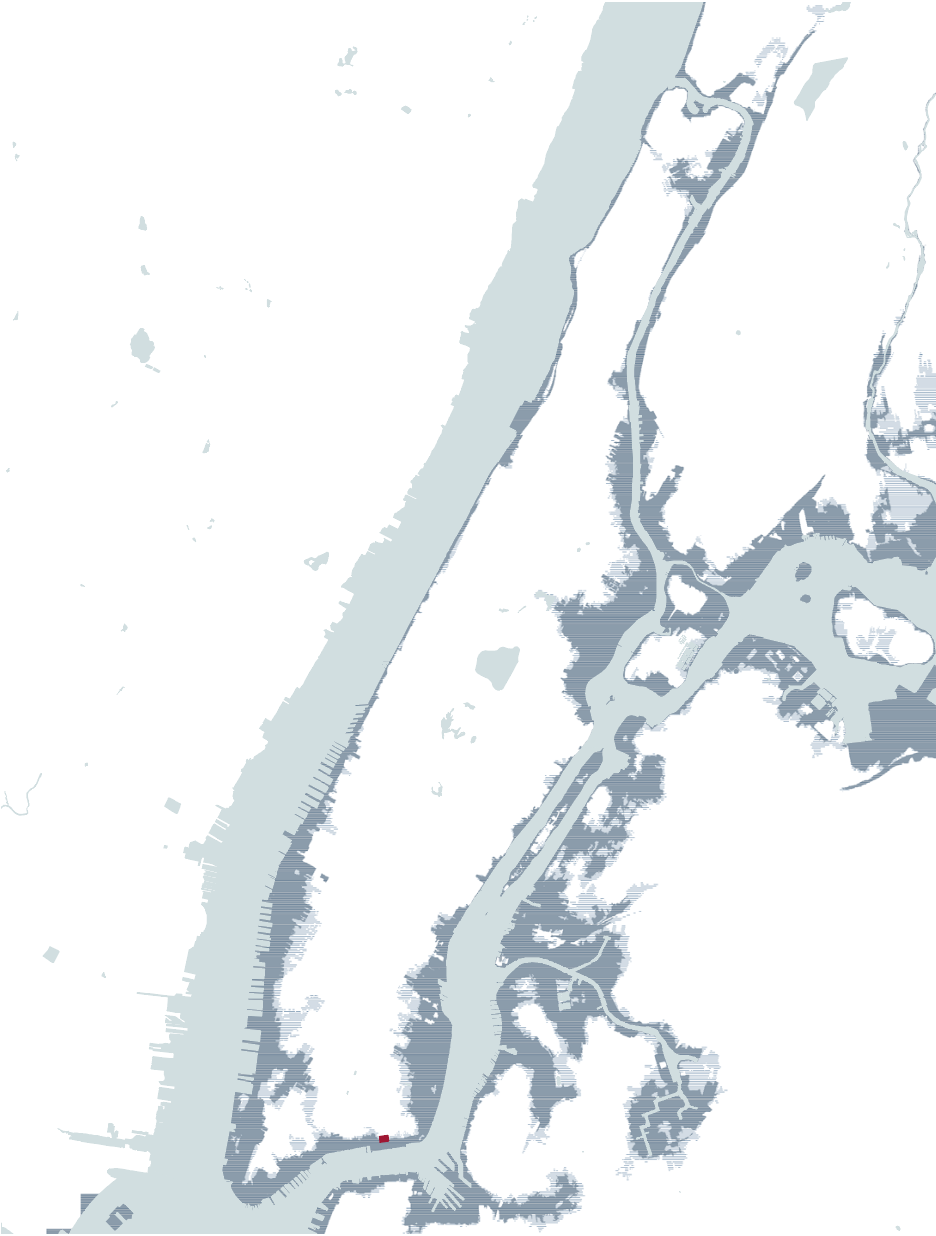

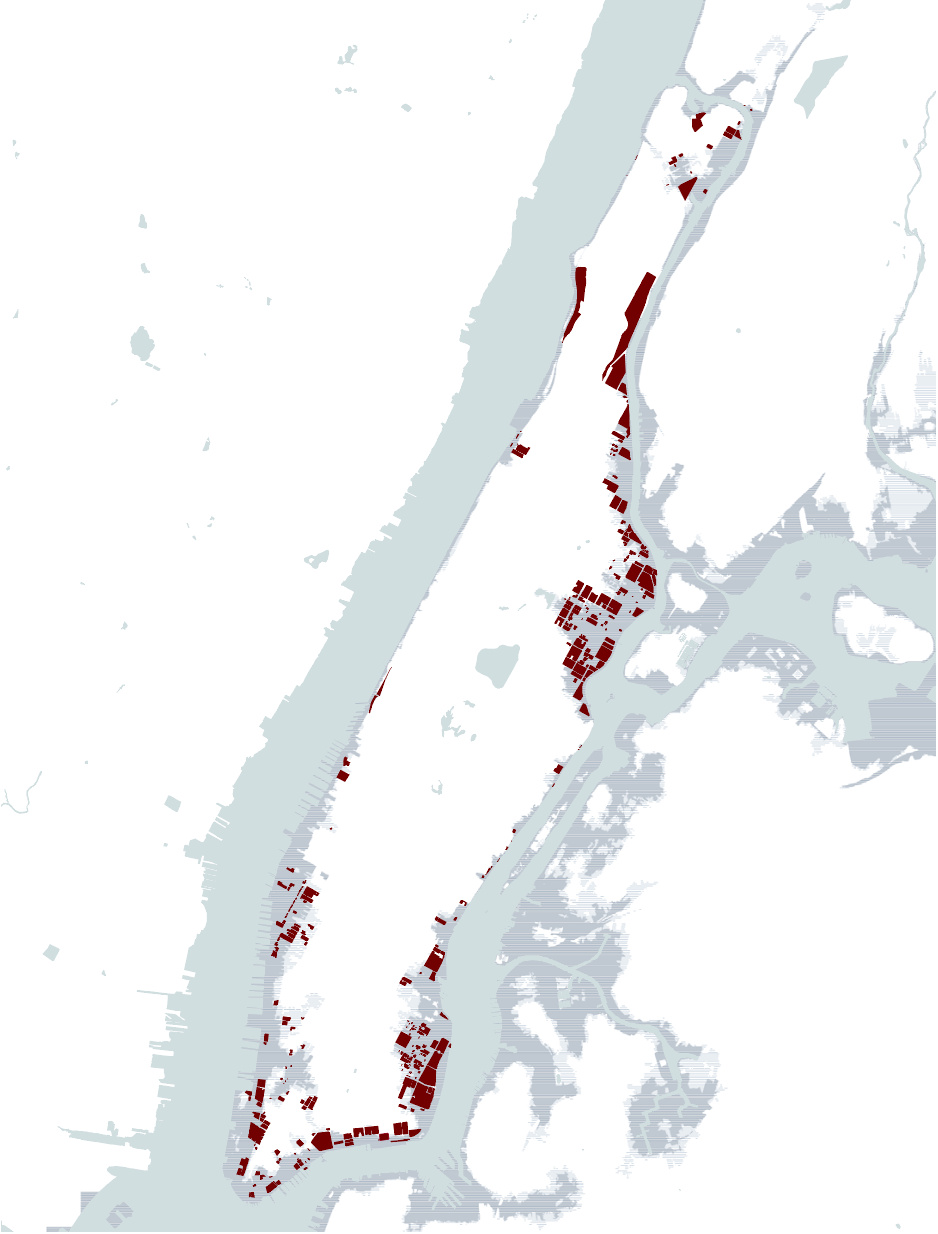
33% of all public schools in manhattan are in the flood zone; and 35% of all city owned lots are in the flood zone



This site dissolves and softens the current wall condition of the coastal edge, restoring the city's relationship to the river. The proposed new resilient infrastructure serves as a catalyst for the coastal regeneration of other city owned land along the Manhattan coastline.
